2019-2020 Spark R&D Women’s Surge Pro Splitboard Binding
Size Tested: Medium
Stated Weight: 581 grams per binding
Stated Features:
- Pillow Line Straps: Light Pebax plastic for increased durability in cold temperatures, with malleable strap pillows to conform to your boot.
- Carbon Reinforced Highbacks: “Rip N’ Flip” highback made of carbon reinforced nylon with a tool-free Forward Lean Adjuster.
- Whammy Bar Climbing Wire: A heel riser built into the base of your binding with an easy access adjustment lever. Provides heel rise at 12 or 18 degrees.
- Pro Hardware: Custom made 7075 T6 aluminum hardware for extra weight savings. 65% lighter than stainless steel components with a hex key head.
- Puck Compatibility: May be used with all Spark and Voile mounting pucks.
- T1 System: Slide and clip toe piece for tour mode. No pin for easier transitions.
MSRP: $575
Test Locations: Valdez, Arctic Valley, & Turnagain Pass, AK
Boards Used: Prior XTC Brandywine Split, Venture Tempest Split
Boots Used: Burton Mint
Days Tested: 30
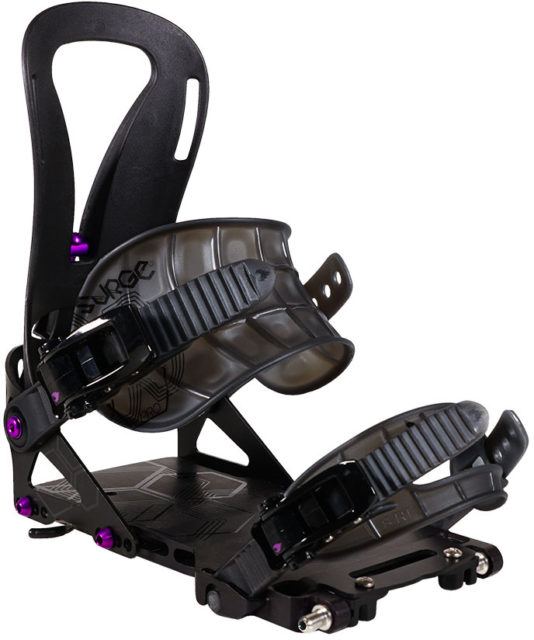
Intro
Spark R&D has followed the rise of splitboarding with the development and continued improvement of splitboard-specific bindings. Their office and factory are located in Bozeman, Montana, where in 2013, I acquired my own first pair of Spark Afterburners. At the time, Spark did not have a women’s-specific line of bindings, but I stuck with that pair for six seasons without complaint.
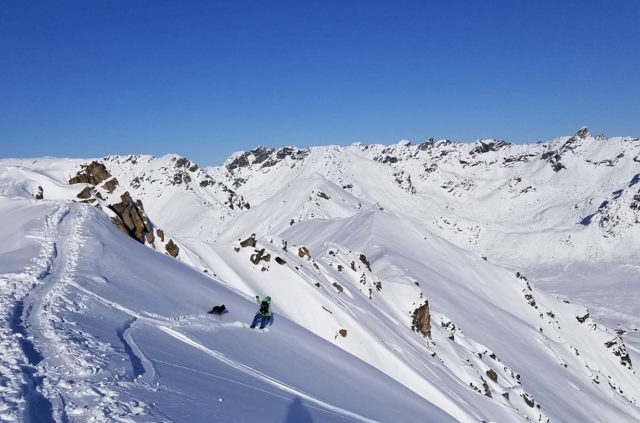
After all those years, I was thrilled by the opportunity to test the new Women’s Surge Pro to see what improvements have been made, especially after reading Andrew Forward’s review of the men’s Surge Pro. Though the Surge Pro is clearly of the same creator as my original Afterburners, it represents a dramatic evolution from early models. Spark describes these bindings as the “lightest and highest performing splitboard bindings in the world.” So … are they?
Design & Construction
My immediate reaction to the Surge Pro was that of surprise at the impressive weight savings they have achieved over earlier generations. The Surge Pro still manages to be incredibly sturdy as the bulk of its mass is contained within the highback and baseplate, but Spark has seemingly shaved every unnecessary gram throughout each component. The design remains simple to avoid fiddling during transitions and reduce the risk of breaking components. Spark has elected to manufacture most of the hardware and plastics in-house in Montana, allowing them to design a clean product with great attention to detail.
The Pebax Pillow Line Straps are a large change from earlier models of Spark Bindings, and unique to any pair of binding I have used from other companies. The design is reportedly based on data from 3D scans of popular snowboard boots to provide a tight, consistent fit. The Pebax plastic is firm but wonderfully malleable, allowing the straps to conform to the contours of my boot. Pebax is also resistant to cold-induced weakening, which has been proven during my testing in sub-zero Fahrenheit temps, so I highly doubt that you’ll need to worry about it becoming brittle or snapping when temps drop. The straps contain ribbing perpendicular to the length of the strap for additional support, providing stability without creating pressure points. I found the Pillow Line Straps to be very comfortable while locking my foot in with an unprecedented fit. In addition to all of these characteristics, the straps are extremely lightweight.
The carbon-reinforced nylon highback is excellent. The highback is padding-free and is molded a bit deeper / more concave to somewhat wrap around the back of your boot. The design allows my boot (Burton Mint) to sit cupped within the highback while maintaining more surface-area contact, and therefore creating a more responsive fit. One of the main differences between the women’s and men’s Spark bindings is that the women’s versions have slightly lower highbacks, as well as shorter and narrower base plates to accommodate smaller boots. The highback material is tough and very stiff for its weight, and contains a built-in forward-lean adjuster. The lean adjuster is a simple design that does not require a tool for adjustments, providing a forward lean from 0-22°.
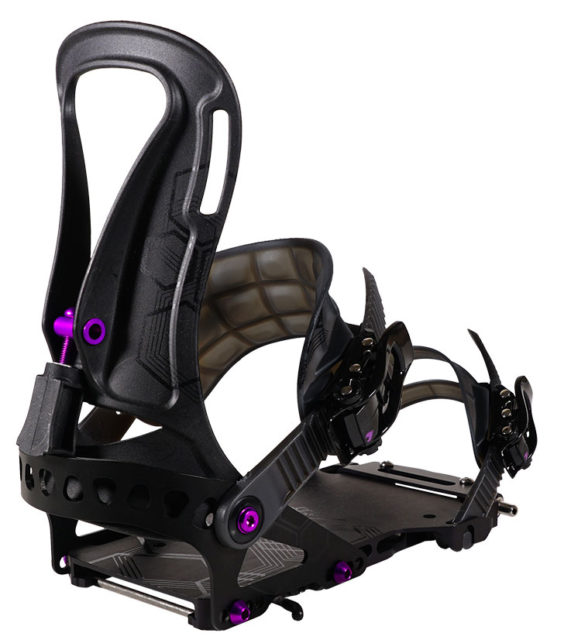
The climbing wire is another exciting modification from earlier models, as Spark decluttered the design by combining multiple climb angles into one adjustable heel riser. The wire flips from 0°, 12°, or 18° of rise and is supported by a heel rest plate that’s affixed to your board. The wire has an easy-access handle to flip up and down, eliminating the awkward task of fishing for your wire with bulky gloves.
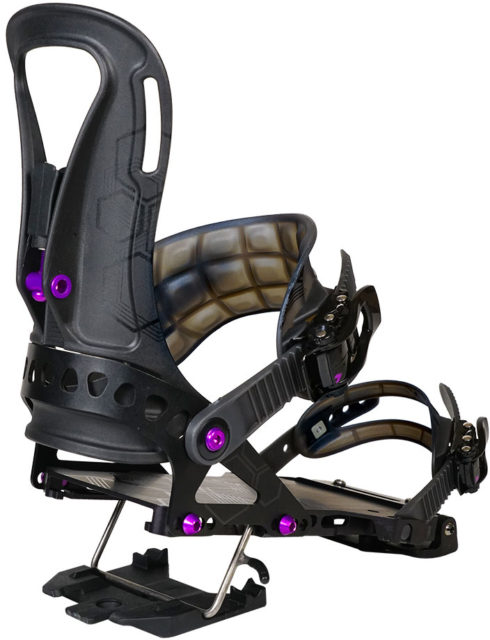
The Surge Pro’s heel cup is largely unchanged from early models, but is molded out of a slightly thinner aluminum for weight savings. It contains 4 stages of adjustment for boot length, allowing more options for that perfect fit. The baseplate remains solid on the Surge Pro, while the Arc Pro has removed material in a honeycomb-like pattern for weight savings. The solid plate of the Surge is one feature that differentiates these two bindings, as it provides a more responsive feel through weight-shift while riding.
Last but not least: Spark’s Tesla T1 touring system. This is a tried and true system spanning all of Spark’s current line, not often tinkered with because it works so well, at least in our experience with all the Spark bindings we’ve used. The T1 touring system is composed of a metal toe piece affixed to the binding, which slides into a touring bracket via hollowed-out steel pins. The toe piece snaps down, locking into a secure pivot point for tour mode. To prepare for the descent, you simply slide the binding onto your pucks (either Voile or Spark versions) and snap down the toe piece. The system is fast, easy, and nearly unaffected by complications from snow and ice buildup. One of the few modifications to this system for Spark’s “Pro” bindings are hollowed-out toe pins, in order to reduce weight.
Tour Mode
I found the Surge Pro to be extremely comfortable for skinning and great for energy conservation due to its scant weight. Despite lacking padding, the bindings fit so well that they eliminated any unwanted shifting while touring. The articulation point at my toe is smooth and tight, adding to the efficiency of each step.
Aside from the weight savings, my favorite new element (compared to their early Spark Afterburners) is the new heel-riser system. While the old two-wire system was effective, it was a pain to adjust. Spark’s new one-wire system is far easier due to the single wire and handle. I was initially skeptical that the wire would stay in place, but so far have had no issues with it collapsing or shifting during climbs.

The Surge Pro works well on steep climbs and switchbacks thanks to its excellent fit, stiff baseplate, and smooth climbing-wire deployment. I found them to be torsionally stable when edging on hardpack, and thought they transferred weight nicely to the effective edge when using the climbing wires. I tested the Surge Pro on some very unpleasant skin tracks (icy, dust on crust, exposed, etc.) and was very impressed with their performance. I felt securely attached to the trail and was able to hold an edge on some of the worst snow on which I would dare to skin. Disengaging the forward-lean adjuster for tour mode also allows you to weight your heels more effectively during steeper climbs, while enabling a more natural stride overall.
Transitions
The T1 system is easy and quick during transitions and very resistant to ice buildup. The tight-fitting toe piece and lack of exposed material mean less surface area for moisture collection when compared to older Spark or Voile pin-system designs. I would suggest carrying a small scraper for snow / ice removal around the pucks, as they remain the only component consistently susceptible to buildup in sticky snow conditions.
There is a noticeable difference in the quality of fit for both Spark and Voile pucks compared to the early Spark Afterburners, which always seemed to require serious force to slide on and off. I recall many occasions perched atop a narrow ridgeline, contorting my body in an attempt to force the binding onto a set of pucks. I tried adjusting the pucks, sandpapering them down, buying different pucks, etc. I had resigned to the opinion that they would always be difficult for the required tight fit. But the Surge Pro slides on and off both metal and plastic pucks with ease, while maintaining a play-free fit. I contribute this change to advances in Spark’s ability to manufacture a clean product, as my old Afterburners were a bit rough around the edges.
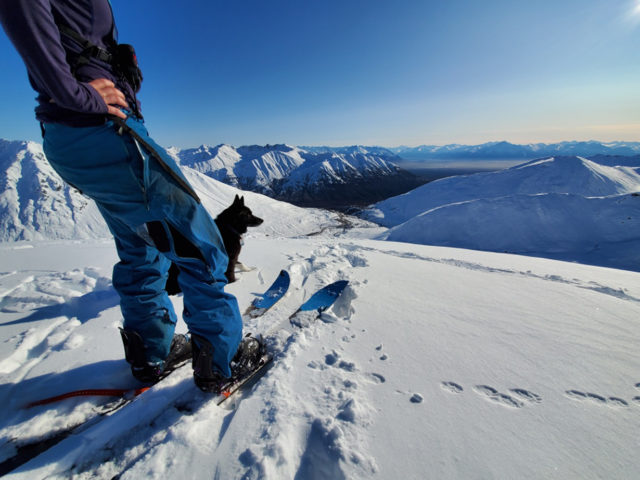
Another nice upgrade with the Surge Pro is the simplicity of its forward-lean adjuster. Older Spark models had a slightly more complicated design which was more prone to snow and ice buildup. The new lean adjuster requires a simple “light switch” flip of the component and you are good to go for riding. It is easy to adjust on the fly, but is largely incapable of shifting inadvertently, in my experience.
Riding
I tried the Surge Pro with my Prior Brandywine and the new Venture Tempest. The bindings have a comfortable and natural feel, providing undelayed and natural-feeling responses to input. It is important to trust your equipment in the backcountry, to know that you will have control in the right place at the right time. In the past, I have fought my way to the top of a very steep line, only to have my binding fail (e.g., strap in and have my toe strap split in two from the cold). No such issues with the Surge Pro. My test conditions for the Surge Pro ranged from very deep sloughy powder to chunky, icy runouts. The Surge Pro is quite stiff, and I found the stiffness of the binding to be effective for the essential edge control on firm snow without compromising all playfulness in powder.
You may want a softer and more forgiving binding for pure powder riding on mellower terrain or if you’re looking for a forgiving binding to use to take more of a freestyle approach to the backcountry. The stiff nature of the Surge Pro results in precise pow slashes and directional control, but also reduces the damping of feedback and physical input that’s conducive to a supremely surfy ride. Your choice of splitboard will be a massive factor in the extent to which you notice this characteristic. I imagine that, when paired with a powder-specific board (with a long sidecut radius), the Surge Pro would be enjoyable due to the inherent surfy nature of the board beneath you. Riding freeride directional boards on steep and variable terrain, I felt that the stiff nature of the Surge was worth it to ensure control when I needed it most.

But if you are looking to tackle more playful / powder-specific riding where maximum stiffness and control is less of a priority, I would suggest trying the Spark Women’s Arc Pro (review coming soon). It’s similar to the Surge in terms of construction and features, but is built with more integral flexibility for a surfier ride.
Durability
Living in Alaska provides unbelievable access to vast expanses of ridable terrain. The sheer magnitude of the land inspires many backcountry enthusiasts to invest in mountain snowmachines / snowmobiles capable of carrying them deep into remote ranges. It is my love of snowmachining that has become one of the best testers of gear durability, since every snowboard I own will inevitably be strapped to my machine as it tomahawks down a mountain.
The Surge Pro went for such a ride this winter, sustaining the impacts of a 200-foot tumble on ice. The result was one slightly deformed, but still rideable heel cup and a snapped-off forward lean adjuster. Despite taking a direct energized hit to the ice, the bindings survived remarkably well. All of Spark’s bindings are built with replaceable components, so the repair for this damage was quick and easy.
As for durability in the traditional life of a binding, I expect nothing but great things from the Surge Pro. I took them on a glacier camping trip, exposing them to sub-zero (Fahrenheit) temperatures and serious wind chill. The Pebax straps remained malleable in the cold and none of the binding materials showed signs of stress. Considering the amount of use I got out of my early Spark Afterburners, I imagine these bindings will be with me for a long time, and Andrew Forward has also been very impressed by the men’s Surge Pro when it comes to durability (he’s now put more than a full season on his pair with no issues).
Who’s It For?
I would recommend the Surge Pro to any lady who appreciates a stiff and responsive splitboard setup; best suited for fast lines and variable terrain for the intermediate to expert rider. The Surge Pro is excellent for long tours where weight is of significant consequence and comfort is essential. At $575, the Surge Pro is not the cheapest piece of equipment, but it’s still a good deal when compared to the Karakoram equivalent (Prime-X Carbon, priced at $929.99). And for a lighter and softer alternative, the Spark Arc Pro is worth a good look.
Bottom Line
Spark R&D is a company that I have come to trust for the quality and reliability of their equipment, and their Women’s Surge Pro binding reinforces this sentiment. Whether you are just entering the world of splitboarding or looking to upgrade outdated equipment, I highly recommend this binding. The Surge Pro is notably advanced from early splitboard technology and I found myself wishing I could use it with my solid-deck boards. The price seems extremely fair considering the binding’s durability, features, and performance, and the Surge Pro is simply a wonderful product, which is why it received our “Best Of” award this year in our 19/20 Winter Buyer’s Guide.
